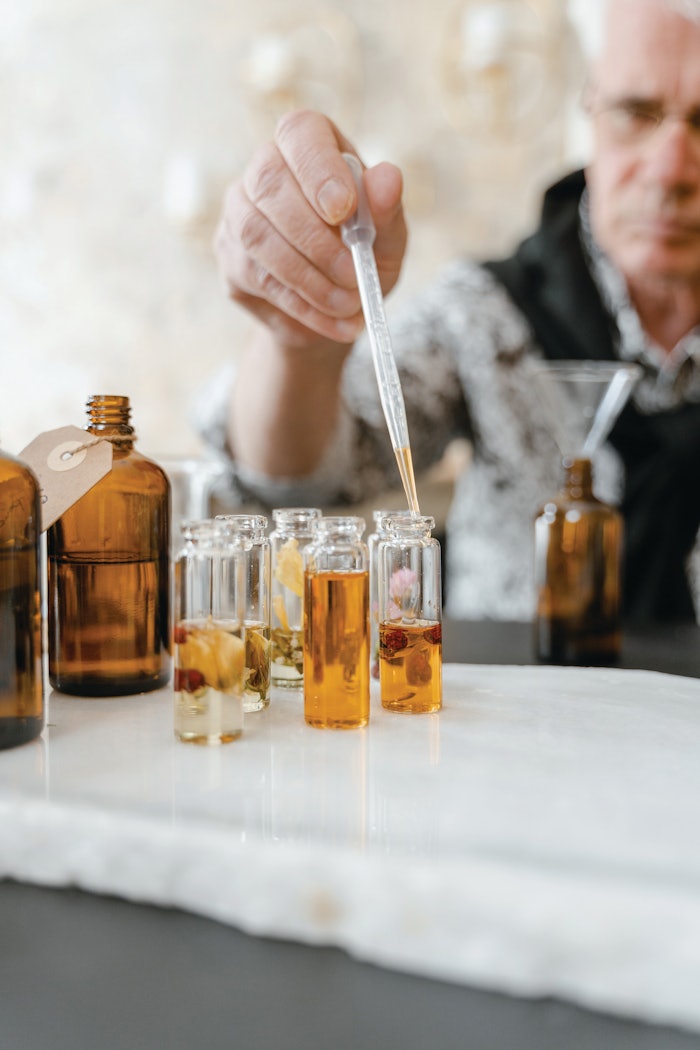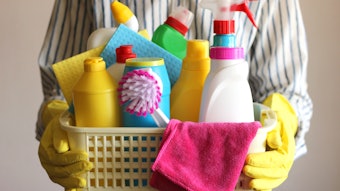
The fragrance industry, like many, is currently undergoing the fastest rate of change in its millennia of history. These winds of change are going to have a major impact on the way perfumers and perfume houses work and the winners will be those best adapted to change. For consumer goods companies’ investment in perfume over other ingredients and package options is a choice and to continue to attract this investment perfume houses will need to pivot to address these changes while maintaining focus on delighting the consumer.
I see three areas, in particular, having the biggest impact on the fragrance industry—regulation, sustainability and machine learning.
Regulation
Henry Ford is claimed to have said his customers were asking for a faster horse and he gave them the motor car. This may be apocryphal but the transition in only a few years from mostly horse to mostly car was actually driven more by sanitation and regulation than speed or convenience.
Our industry is also being shaped by regulation—changing classification of existing materials and challenges in registering new ones. Faced with the potential disappearance of valued materials perfumers naturally ask for new materials that will fill the gap and allow them to continue to design in the way they know. The unintended result however is that whenever a material is threatened with removal from the perfumer’s palette there is a proliferation of new potential replacement materials aiming, as much as possible, to be a ‘drop-in’ alternative.
However, this desire to maintain palette continuity means that a significant portion of industry R&D resource is tied up in effectively keeping us in the past trying to develop ‘faster horse’ versions of current materials. Perfumers need to be more comfortable being uncomfortable, explore new ingredient ideas and learn to win with the palette of the future. To paraphrase Wayne Gretzky—we need to skate to where the puck is going to be not where it has been.
Sustainability
Sustainability can sometimes seem like a bewildering whack-a-mole of multiple, often contradictory, elements; renewability, biodegradability, biogenicity, carbon footprint. Sometimes a win in one area is a loss in another vector. At Procter & Gamble, we believe the Life Cycle Analysis tool is the best guide to delivering products with an optimized sustainability profile.
For perfumer and perfume design two things become apparent with the desire to minimize carbon footprint. The first is that if we are to assess the full carbon impact of a perfume in functional products, each individual ingredient will need to pull its weight. Materials with little or no olfactive impact will struggle to justify the carbon contribution. This will trigger a move to more impactful materials with higher odor value. Perfume dosages in finished products will become lower over time. This does not mean a drop in performance or investment, simply a move to greater mass efficiency.
This can be an advantage for the perfume industry. As perfume competes with other investment choices in the design of a finished product its flexibility in mass efficiency is a benefit. We will also see perfume delivery technologies play an increasingly important role in smart, targeted delivery of perfume to key consumer touchpoints.
 Consumer education is also critical. The industry has come together to proactively lead the way here with the Fragrance Creators Association’s Fragrance Conservatory initiative.
Consumer education is also critical. The industry has come together to proactively lead the way here with the Fragrance Creators Association’s Fragrance Conservatory initiative.
A second area that will be challenged is the continued use of steam-distilled naturals in perfumes. There’s an accepted consumer belief that essential oils are good for people and the planet. Of course, this isn’t necessarily true and just because something is natural doesn’t mean it is sustainable or healthy (see my earlier point about a horse-based transport system).
In our industry we often read that 10,000 kg of rose petals or 250 kg of lavender are needed to make 1 kg of essential oil*. This rarity is often exploited. The flipside of this scarcity is that it looks like very poor yield. Through the lens of carbon footprint the land, water and energy use in extracting many essential oils will become increasingly unsustainable.
More upcycling along with new and more sustainable agricultural and extraction processes will play a role. To a degree the future of biogenic carbon also lies with biotechnology and the ability to efficiently convert natural feedstocks into the aroma chemicals we need. This, coupled with green chemistry, will be the main driver of new ingredient technologies. The legendary Chanel perfumer Ernest Beaux is quoted as saying, "We’ll have to count on chemists to find new substances if we are to make new and original notes. The future of perfumery is in the hands of chemistry." I would say the future of perfumery is now in the hands of biochemistry.
Consumer education is also critical. The industry has come together to proactively lead the way here with the Fragrance Creators Association’s Fragrance Conservatory initiative. This is an online tool that empowers consumers with the science-based information they need to become confident in the scented products they use. This builds industry credibility alongside deeper consumer understanding and appreciation for fragrance.
Machine Learning
The promise of artificial intelligence (AI) is that it can perform intellectual tasks far more efficiently than a person or even a group of people. The current star of AI is ChatGPT—an open AI application that can answer questions, write complex essays or tell jokes upon request. And while professors may not want to see AI written essays from students, consumers don’t care so much about the design provenance of a fragrance —AI designed scents are already being actively exploited in personal care.
 Perfumers failing to share formula tips and tricks leads to information disparity with the AI tools that are populated with all known formulas in a given environment.
Perfumers failing to share formula tips and tricks leads to information disparity with the AI tools that are populated with all known formulas in a given environment.
Will AI replace perfumers? AI can certainly replace many predictable tasks of the perfumer but once again perfumers need to adapt. Just as the invention of the film camera removed the job of image capture from the artist—so the artist was freed to become more creative in their output and AI should spur a boost in creativity. The robots base their decisions on available data and they’re not as well suited to creating Ernest Beaux’s "new and original notes" which should provide a virtuous cycle of perfumers adopting new materials and technologies more quickly.
The common perfumer practice of working in isolation also needs to change with the expansion of AI tools. Perfumers failing to share formula tips and tricks leads to information disparity with the AI tools that are populated with all known formulas in a given environment. Game theory has a few things to say in such an information asymmetry and cooperative game theory says the best outcome for the group is to follow a collaborative strategy, the best outcome being when everyone in the group is doing what’s best for themselves and the group. In other words, to survive in an AI world—perfumers need to collaborate more and perfume houses need to reward accordingly.
The world does not have a whole lot of perfumers and I expect it will continue to be a fun and challenging career for those lucky enough to pursue it. Adaptability, technical acumen and frequent personal re-invention will become increasingly important to succeed. However, to weather these winds of change perfumers need to explore and embrace the materials and technologies of the future, they need the space and permission to do this and they need to do it more collaboratively.
*The measurements given are strictly anecdotal [Updated April 11, 2023]
To discover the entire magazine, visit the March 2023 Perfumer & Flavorist+ issue.










